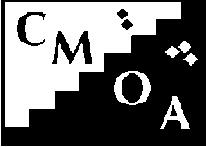
CAREER MEDICAL OFFICERS BULLETIN Volume 1 Number 1 December 1996
Brief Summary of South West
Area Network's Fourth Annual Trauma Seminar
Kien Caoxuan CMO III Bankstown ED
On November 8 1996 the Trauma Department at Liverpool Hospital organised their fourth annual seminar on trauma at Sunnybrook Convention Centre, Warwick Farm, Sydney. For $90 each, participants were treated to an informative fun day on topics related to trauma management, in addition to a decent smorgasbord lunch.
This year, SWAN (South Western Area Network) had interstate as well as international speakers. From the UK we had Major Tim Hodgetts, a delightful boyish looking bloke whose world renowned expertise on disaster management was almost as remarkable as his ability to keep his audience entertained and attentive at all times. He led us through the setup he arranged for Wembley Stadium during EURO '96, as well as the changes he has made to the trauma system at his own hospital. Other topics presented by Dr Hodgetts included scene approach to multiple casualties and ways to reduce wasted time in bringing a head injury to theatre.
Dr Ken Boffard is the Director of Trauma, Johannesburg Trauma Service, South Africa. The depth and extent of his experience were reflected in his spot-on, clear-cut, no-bull approach to the problems presented. Carol Sharbury, trauma Coordinator at the San Francisco General Hospital Trauma Service, shared with the audience her experience in the administration, organisation and quality control of a large trauma service. Dr Lawrie Malisano, orthopaedic surgeon and specialist in Pelvic Orthopaedics at Princess Alexandra Hospital in Brisbane added his authority and expertise to the seminar on Pelvic Trauma.
Topics covered during the nine hour seminar included Pelvic Trauma, Trauma Systems, Penetrating Trauma, and "How I Do It!"
In the first session, Trauma Systems, Dr Boffard provided us with details of the gruesome realties of practice in present day Johannesburg, with its scenes of brutality and unrest. The prevalence and severity of of trauma faced by him and his colleagues is quite incredible. However, the doctors seemed to have devised a system which can cope with such terrible demands for urgent care.
The topic of Video Analysis was especially interesting. Some in the
audience were concerned about confidentiality when it came to filming staff
members working around a trauma victim. Also, some were worried about finger
pointing and humiliation during the playback analysis of the tapes. However,
everyone later seemed to agree that such a service would improve the Resus
Room significantly in terms of staffing and protocol re-evaluation. So
long as the tapes are wiped as soon as they have served their purpose (ie,
to improve the system) the thought seems worthy of qualified support.
(You may be interested to know that videotaping of emergency performance
is widely used as a training technique in other industries where critical
decision making and teamwork are vital. An example I know of is Crew Resource
Management training for U.S. Airline Pilots - Ed)
Service statistics were presented, as service statistics often are at such meetings. Enough said.
Pelvic trauma was presented as a major topic, of particular interest since it is a sad affair and the prognosis is usually grim. Dr Malisano from Brisbane was joined by the Liverpool orthopods, Drs Powell, Ireland and Kuo, discussing the statistics and management of this type of injury. As with all possible bleeders, after the ABC's one would look for the five main sources of blood loss, namely External Bleeding, Into the Chest, Into the Abdomen, Into the Pelvis, and From the Long Bones.
In the case of Pelvic injury, a single AP X-Ray would suffice in the immediate stage to establish the presence or absence of pelvic stability. At a more convenient moment a CT or 3D scan maybe ordered.
Basically, significant pelvic injuries include:
Dr Richard Bell, Radiologist, also discussed the difficulties, pros and cons of angiographic embolisation as treatment in pelvic trauma.
The third session was Penetrating Trauma. Dr Boffard, from Johannesburg,
presented basic principles in this field, including Pre-hospital care (the
ABCs), ED care (continued ABCs, stop the bleeding and complete the Primary
Survey). He made many valuable points, including:
Penetrating trauma to the thorax and abdomen were also presented, in detail too extensive for this short overview.
In the final session, the experts showed us how they would do things and gave the audience some pointers in how to improve the settings when it comes to areas like rural trauma, head injury, spinal injury, etc...
At the end of each of these sessions there was a case presentation or two. Some with happy outcomes, some not. Dr Michael Sugrue, the man responsible for the SWAN seminars, stepped through the chronicle of each case, providing vital signs and other data while the experts in the panel suggested their treatment plans. These case presentations were probably the highlights of the seminar, being both enjoyable and informative. One felt, thanks to the great slideshows, that one was right there in the resus room, getting down and dirty with a real case. Real cases, real decisions, real outcomes. Compelling stuff.
The participants, including doctors, nurses, defense personnel and ambulance staff, went home tired after the long day, but everyone seemed happy and satisfied. Congratulations to the organisers of SWAN IV. Keep up the good work and all the best for SWAN V.
 Return to Vol 1 No. 1 Contents Page
Return to Vol 1 No. 1 Contents Page
 Return to CMO Bulletin Menu
Return to CMO Bulletin Menu
 Return ASCMO (formerly CMOA) Home Page
Return ASCMO (formerly CMOA) Home Page